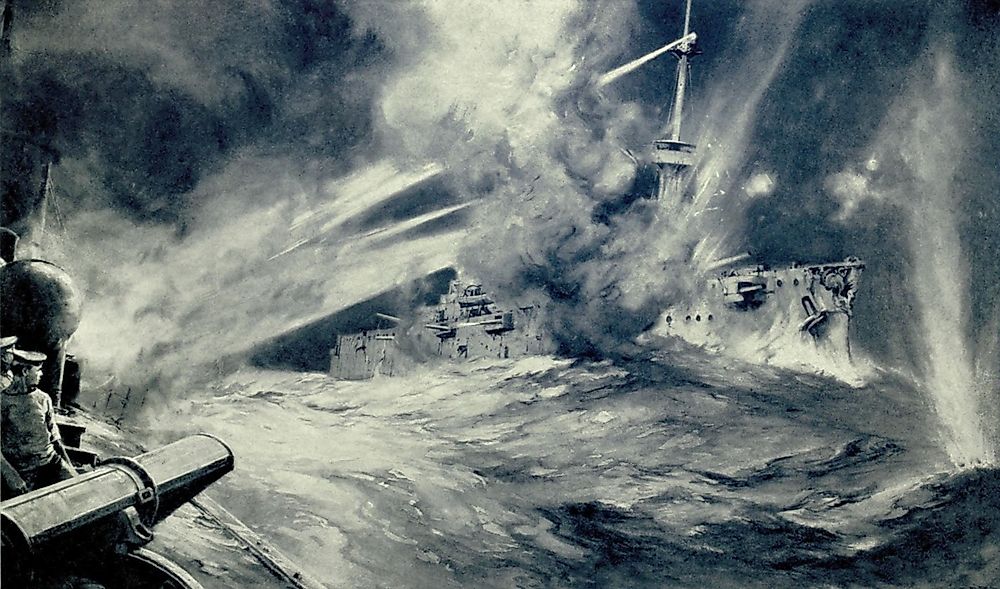What Was the Battle of Jutland?

The British Royal Navy’s Grand Fleet fought the Battle of Juntland against the Imperial German Navy’s High Seas Fleet. This naval battle took place from May 31 to June 1, 1916, unfolding during the First World War and eventually becoming the largest naval battle in that war. The German fleet purposed to destroy the British fleet with the intention to have access for it’s naval vessels to the Atlantic. On the other hand, the British Navy strategized on how to keep the German fleet far from Britain and her waters. On May 30, British intelligence intercepted communication about Germany’s plan to station its submarine along the routes on which British battlecruisers would most likely use, and therefore sailed on before the Germans had completed their preparations. Although both countries claimed victory, they both lost. The Germans failed to destroy the British fleet while the British lost more ships and more sailors. However, the main goal of the British was successful which ensured the Germans did not get access to both the UK and the Atlantic.
Background of Battle
The German Vice-Admiral, Reinhard Scheer, believed that their fleet had better ships and more men than the UK. Therefore, he devised a strategy to destroy the English fleet by raiding the naval forces, laying mine on the British coast, and undertaking submarine attacks. Nevertheless, the submarine attacks halted because neutral ships fell victim since the international rules required the attackers to give warning to vessels and to not attack neutral vessels. Still determined, the Germans plotted to lure the British ships from their bases into pre-planned submarine attacks. Bad weather conditions deeply affected this plan thus it could not continue. The second plan was to raid British cargo and cruisers on a route closer to Germany, and fortunately for Britain, they intercepted the Germans communications detailing battle preparations. This interception made Britain to change strategy and escape the impending trap. The British possessed a copy of the German codebook which played a major role in decrypting German’s communication.
The Battle
On May 31, in the afternoon Britain opened fire on German torpedo boats, and some minutes later a German light cruiser hit the British’s at a close range. As the attacks intensified, the British command launched the first seaplane to locate the Germans and gather more information. Unfortunately, relaying information from the seaplane failed. What followed were series of tactical maneuvers and fighting which resulted in smoke and fog that made the battle harder because of poor visibility. At dusk, the German battleships found themselves facing the Grand fleet’s main battle line which had successfully approached them unnoticed through the smoke and mist. Somehow the Germans, on realizing of the trap ahead, managed to disengage and retreat successfully.
End and Outcomes of the Battle
An hour later, the German battleships encountered the British main frontline again, and the British engaged them with concentrated fire. Collectively, the worst of the encounter happened as night fell. German Commanders managed to escape because the British light cruisers failed to accurately report seven encounters with the German Battleships. The next afternoon, German authority claimed victory. In total, 6,784 British and 3,039 Germans lost their lives. The British lost property weighing around 113,300 tons and the Germans lost 62,300 tons. In Britain, critics alluded failure to poor shell performance that merely scratched the German ships and poor communication between the ships even though the ships were in contact.











